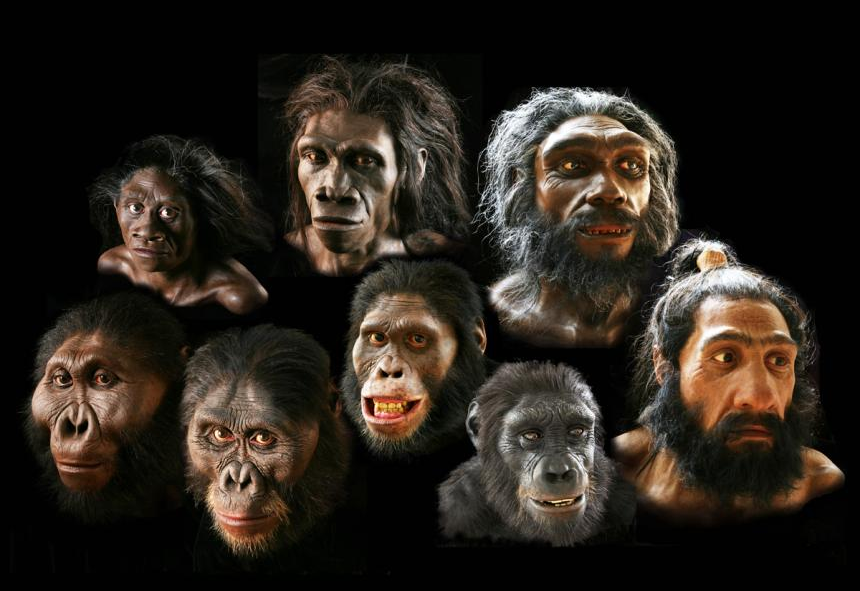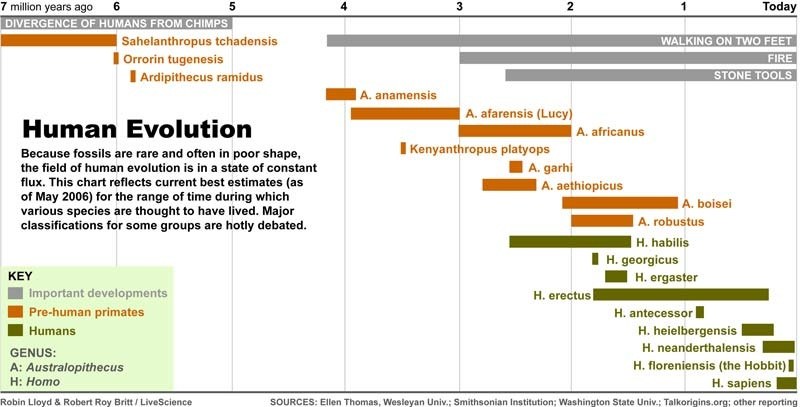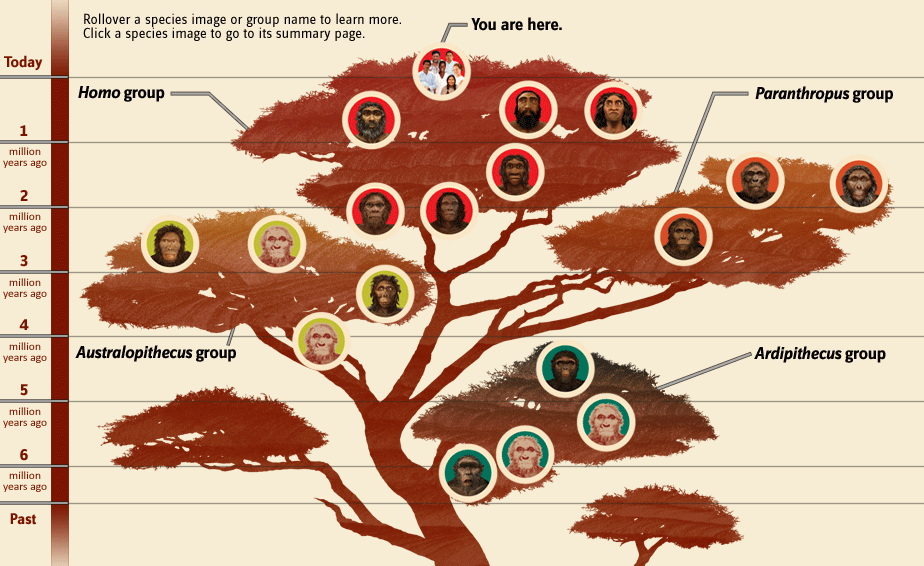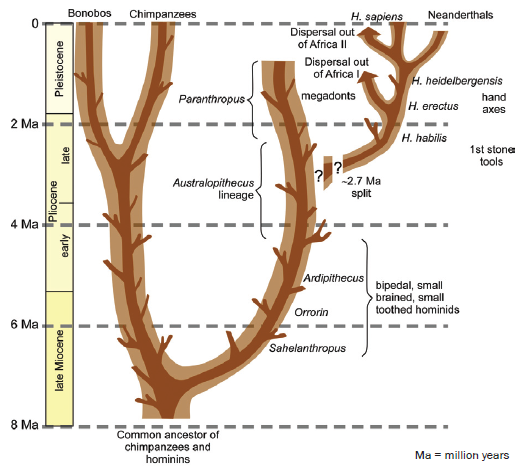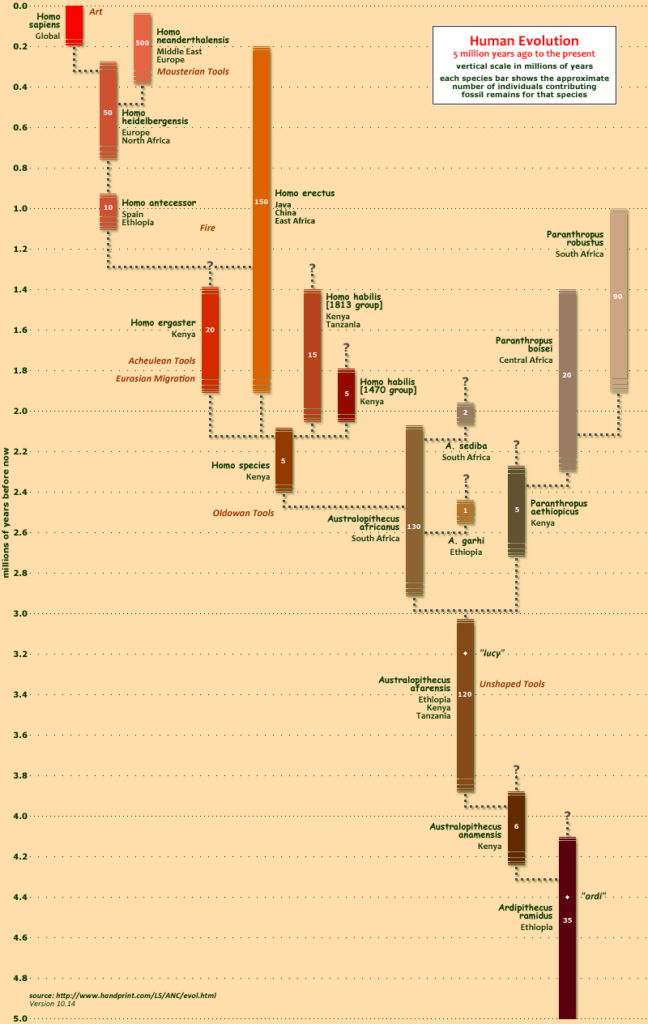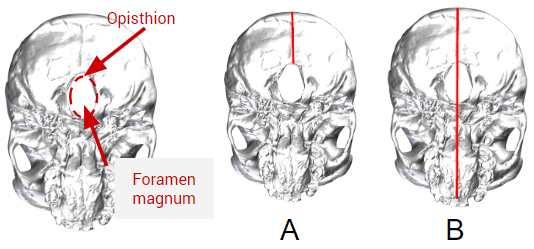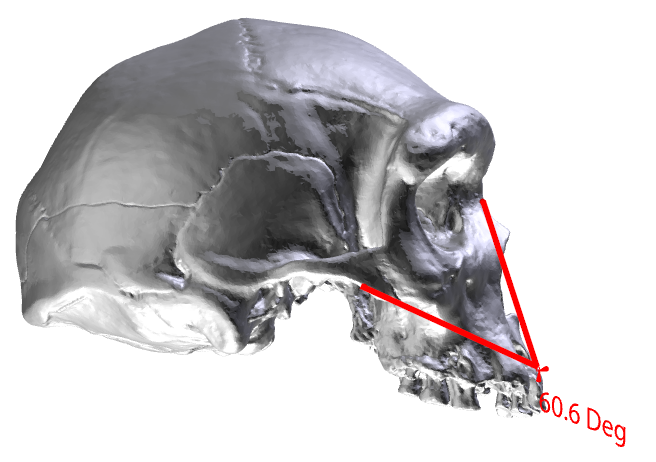Hominins
Phylogenetic trees, evolutionary trees
Since we are the only surviving species of hominin, we can only find out from fossils and archaeological finds about our evolutionary past since the separation with the chimpanzees.
Using radiometric dating and geological methods (in which layer was the fossil found and what do we know about this layer?) scientists can find out about the approximate age of a fossil.
But it is difficult to find out how the individual fossils are related to each other. Are two finds of the same species or should they be classified into different species? This is easier to answer if the finds have very different characteristics (including genetic traits), seemingly lived very far apart in time, and were found in completely different regions of the earth.
But often it is not so easy to answer. It also depends on how one defines the term “species”. Usually, individuals are considered to belong to a species if they can breed together and produce fertile offspring. But we do not know exactly who has been mating with whom throughout our evolutionary history, especially when “species” lived around the same time and in the same region. From DNA analysis, for example, we know that some of us have “Neanderthal DNA” in us. Apparently, some of our Homo sapiens ancestors have mated with Neanderthals – and yet a distinction is made between the species Homo neanderthalensis and Homo sapiens.
Therefore, the differentiation of species or subgroups in Hominini is more or less fluent, and sometimes it is difficult to put them into distinct categories. Also, there are different interpretations with each newly discovered fossil. Thus, the views of different scientists about the phylogenetic relationships between the Hominini differ.
And so there are also different evolutionary trees that depict relationships in different ways or indicate the degree of certainty that scientists have about relationships.
Compare the different representations of the family tree of hominins (see also illustrations in your respective textbook).
- Which information is shown, which is not? (Time, species and / or genera, ancestry relationships, degree of certainty about information?)
- For which information is there agreement between the figures (time periods, relationships between species / genera; point out the separation between the Paranthropus lineage and the Homo lineage)
- Are there any different or contradictory information between the pictures on the assumed relationships between species ?
Noticing and measuring differences in hominin skulls
By observing and surveying the skulls of various hominins, we can understand the changes in some of the physical features throughout our evolutionary history.
Hominid skulls can be used in different ways in the classroom, for example:
- replicated fossils
- 3D printed copies
- suitable 2D or 3D image representations
True-to-scale replicated fossils and 3D prints are particularly suitable for handling and observing differences in morphological traits, and for physically measuring these traits.
2D image representations are suitable for measuring features that are independent of scale (angles, proportions). 3D representations require a computer and with them all measurements can be performed digitally (see below).
About 2-4 45-min lessons should be scheduled for measurement and evaluation.
The following skull measurements and materials are inspired and developed in collaboration with the project
Ancient Ancestors – Be a Paleoanthropologist for a Day
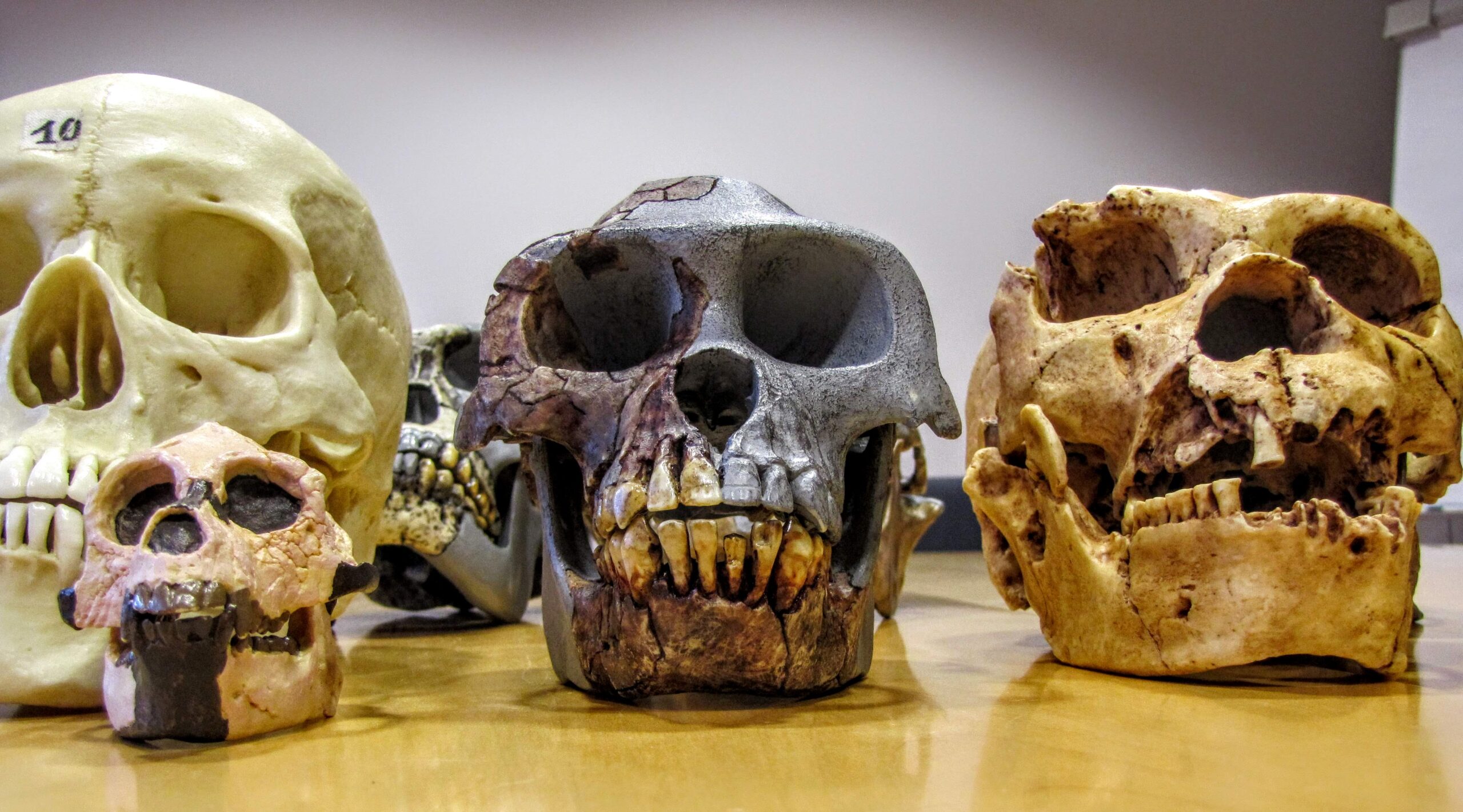
Observing differences in hominin skulls
An activity for students to explore and notice traits on fossil hominin skulls

Hominin skull measurement instructions
Instruction sheet for measuring cranial capacity, opisthion index and prognathism on fossil hominin skulls

Hominin skull measurement Google sheet for data entry and analysis
Google sheet template for entering and plotting the measurements of hominin fossil skulls
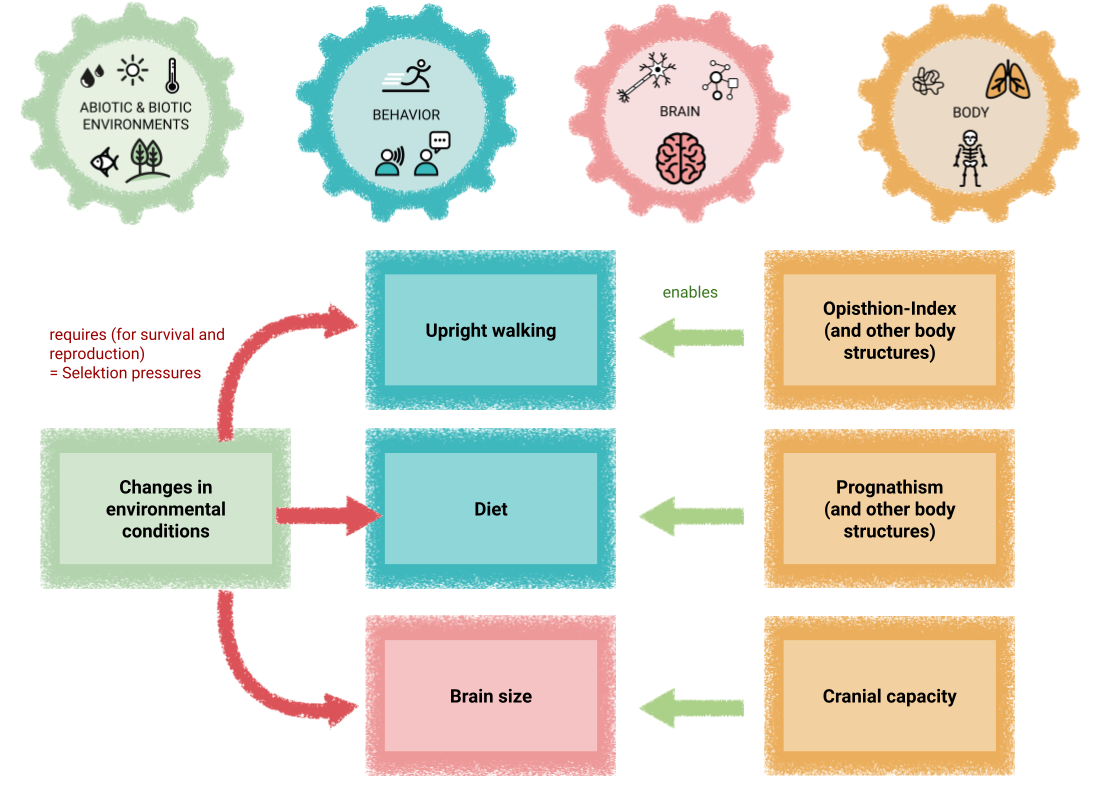
Causal map materials for skull morphology and related traits
Materials for constructing an initial causal map relating observable features of fossil hominin skulls, behaviors, and environmental conditions
Position of the Foramen magnum
- Gives us clues about the evolution of upright walking during human evolution
- Opisthion-Index: A/B * 100
- Gives us clues about adaptations to a particular dietary niche in the course of human evolution
- see: cooperative foraging, tool use
Cranial capacity
- Gives us clues about the evolution of brain size in the course of human evolution
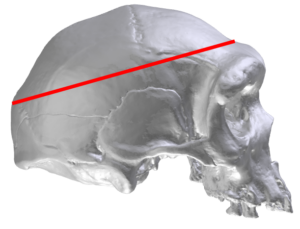
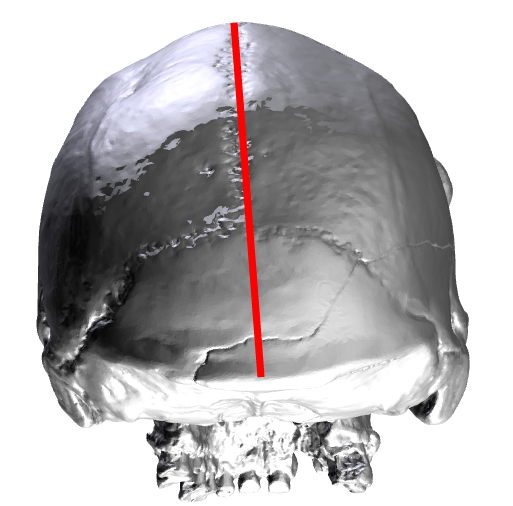
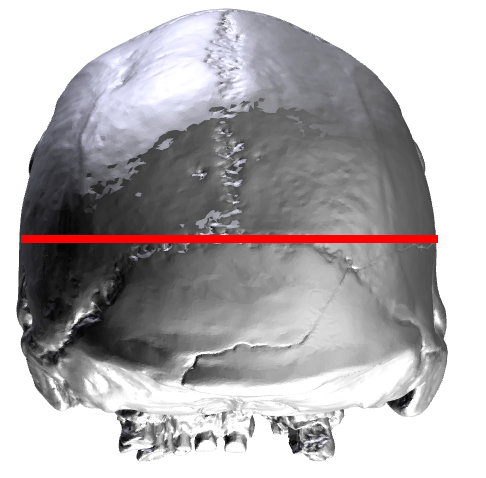
Collection of hominin fossils and materials
Examples of 3D models on the website Sketchfab (also suitable for smartphone and tablet, but does not allow measurements):
- Gorilla
- Pan troglodytes (Chimpanzee)
- Sahelanthropus tchadensis
- Australopithecus afarensis (Lucy)
- Paranthropus aethiopicus (Black Skull)
- Paranthropus boisei (OH 5, Nutcracker man)
- Homo habilis (KNM-ER 1813)
- Homo erectus (Peking Man)
- Homo heidelbergensis (Miguelon)
- Homo neanderthalensis (La Ferrassie)
- Homo sapiens


